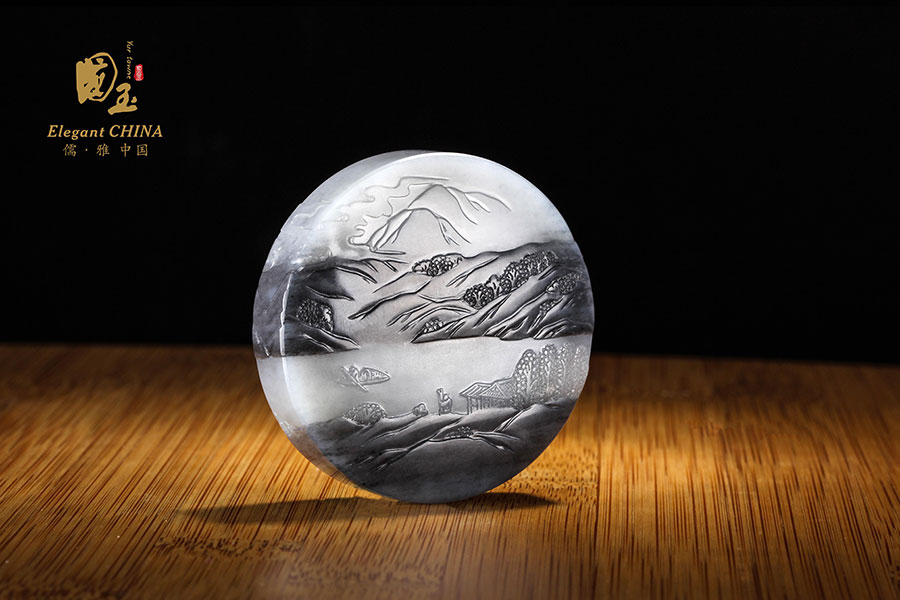 |
|
A craft of Hotan jade. [Photo provided to China Daily] |
Xinjiang Hotan jade, named after the place it comes from, is renowned for being fine-textured and shiny. And prices for the precious stone have gone through the roof in recent years.
Meanwhile, as collectors and investors have busied themselves buying and selling wares made of the precious stone, Yu Ming, head of the Hotan Jade Trading Association of Xinjiang, has taken a different path with his just released book, A History of Xinjiang Hotan Jade Mining.
In his work, which took him a decade to complete, the jade connoisseur has traced the history of jade mining and its trade since the Neolithic period.
According to Yu, the jade falls into two major categories-block-shaped mountain material mainly exploited in northwestern China's Kunlun Mountains and pebble-shaped ziliao (seed material) mainly found in the Yurungqash River in the Xinjiang Uygur autonomous region.
The ziliao is derived from the mountain material debris that is carried down into the river.